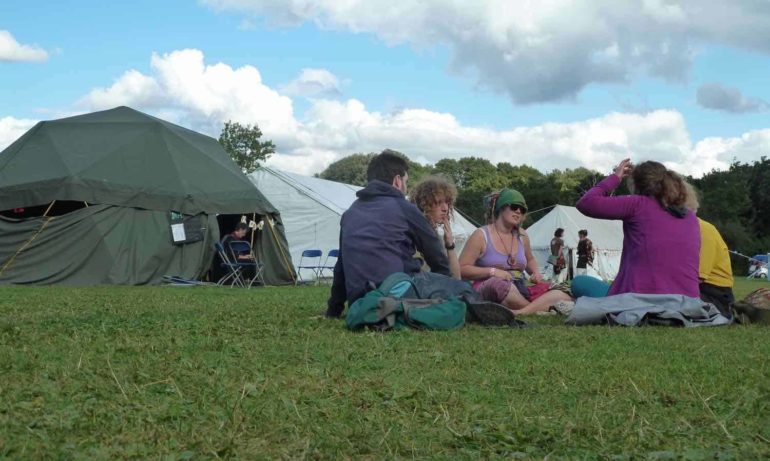About 600 people from more than 70 countries from all over the world took part recently in the International Permaculture Conference in London. The motto for the successful conference was Designing the World We Want.
Permaculture is much more than designing farms and implementing special farming techniques. It is a holistic approach to farming, local societies and people’s life. Central to permaculture are the three ethics: care for the earth, care for people, and fair share. It also builds on 12 principles (see below). Many good examples from all continents of implementing permaculture were presented at the conference. There should be no doubt that the support for and implementing of permaculture is growing and that it has a lot of very important concepts, experiences, knowledge, design and techniques to offer the world. There were also very interesting speeches and seminars on new forms of economies building on the same types of ethics as and supporting permaculture.
There has been a very positive development of cooperation and mutual respect for different paths of sustainable forms of agriculture over the last 10 to 15 years. The goals and direction of agriculture which use different names—agroecology, organic, biodynamic, and permaculture—have very much in common, mutual respect for each other and some cooperation. Hopefully, this will evolve further. This is something that should be discussed in different movements—how can we strengthen the cooperation and learn from each other?
Permaculture strategies focus on the opportunities, rather than the obstacles. Positive examples of local communities and farms are important, but not sufficient to create the world we want. I think that there is a need for more discussion on how to change the dominant political path and power in the world.
12 principles of permaculture as described by David Holmgren:
1. Observe and Interact – “Beauty is in the mind of the beholder”
By taking the time to engage with nature we can design solutions that suit our particular situation.
2. Catch and Store Energy – “Make hay while the sun shines”
By developing systems that collect resources when they are abundant, we can use them in times of need.
3. Obtain a yield – “You can’t work on an empty stomach”
Ensure that you are getting truly useful rewards as part of the working you are doing.
4. Apply Self Regulation and Accept Feedback – “The sins of the fathers are visited on the children of the seventh generation”
We need to discourage inappropriate activity to ensure that systems can continue to function well. Negative feedback is often slow to emerge.
5. Use and Value Renewable Resources and Services – “Let nature take its course”
Make the best use of nature’s abundance to reduce our consumptive behavior and dependence on non-renewable resources.
6. Produce No Waste – “Waste not, want not” or “A stitch in time saves nine”
By valuing and making use of all the resources that are available to us, nothing goes to waste.
7. Design From Patterns to Details – “Can’t see the forest for the trees”
By stepping back, we can observe patterns in nature and society. These can form the backbone of our designs, with the details filled in as we go.
8. Integrate Rather Than Segregate – “Many hands make light work”
By putting the right things in the right place, relationships develop between those things and they work together to support each other.
9. Use Small and Slow Solutions – “Slow and steady wins the race” or “The bigger they are, the harder they fall”
Small and slow systems are easier to maintain than big ones, making better use of local resources and produce more sustainable outcomes.
10. Use and Value Diversity – “Don’t put all your eggs in one basket”
Diversity reduces vulnerability to a variety of threats and takes advantage of the unique nature of the environment in which it resides.
11. Use Edges and Value the Marginal – “Don’t think you are on the right track just because it’s a well-beaten path”
The interface between things is where the most interesting events take place. These are often the most valuable, diverse and productive elements in the system.
12. Creatively Use and Respond to Change – “Vision is not seeing things as they are but as they will be”
We can have a positive impact on inevitable change by carefully observing and then intervening at the right time.
Links to resources on permaculture:
International Permaculture Conference
Essence of Permaculture (David Homlgren)
12 Principles of Permaculture by David Holmgren













